On The Town…. with Chip Deffaa: Count Basie and Louis Jordan
I’m so glad I got to see the Basie Band, now under the direction of trumpeter Scotty Barnhart. They spent a week at Birdland, recording a "live" album for Concord Jazz.
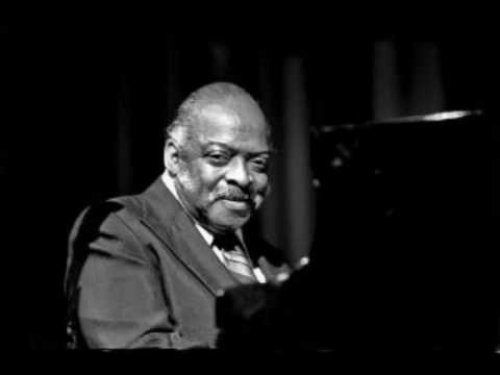
[avatar user=”Chip DeFFaa” size=”96″ align=”left”] Chip DeFFaa, Editor-at-Large[/avatar]
Schools like to teach African-American history around this time of year, often focusing—understandably—on achievements in civil rights. But in recent visits to clubs and theaters, I got some very good African-American history lessons of another kind–reminders of significant African-American contributions to the fields of music and entertainment.
I caught the legendary Count Basie Orchestra—still the standard-setter for big-band jazz—at Birdland, and then caught the musical revue Five Guys Named Moe—celebrating the legacy of jump-blues bandleader/entertainer Louis Jordan—at Westchester Broadway Theatre. Let me tell you a bit about what I witnessed.
* * *
Oh, man! I’m so glad I got to see the Basie Band, now under the direction of trumpeter Scotty Barnhart. They spent a week at Birdland, recording a “live” album for Concord Jazz.
They were so wonderfully tight, the night I attended–a clean, hard-hitting, full-bodied band, with the mastery of dynamics they’re famous for. That band, founded by Basie in 1935 (85 years ago!), remains unsurpassed among big-band jazz orchestras.
So much to like. The well-matched reed section–five players breathing and phrasing as one. The cute, sly, sassy responses of the muted brass. (And boy! Do they make effective use of mutes. That in itself is almost a lost art.)
And there’s that character that whole band projects–that famed relaxed swagger. The timeless charts by Ernie Wilkins, Quincy Jones, Frank Foster, Neal Hefti.
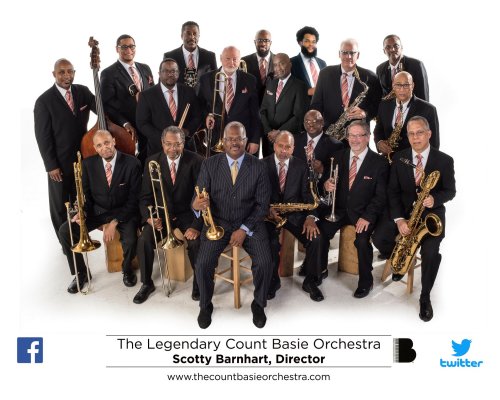
The Legendary Count Basie Orchestra, Scotty Barhart, director
And there was Carmen Bradford–who’s never sounded better–showing how it’s done on “Honeysuckle Rose.” The sense of swing, the scatting with a naturalness you rarely hear in anyone, the attractive timbre, and the authority. I’ve always liked how she sings that song. But she really owns it now. And it was a treat, too, to hear her sing “Just for a Thrill”–which she said she’d just learned. (I really wish I could have brought some of the younger singers I work with to hear her; they’d learn something.) She really fits with that band; she’s a part of it as much as any instrumental soloist. Count Basie (1904-1984) hired her. And he always was a good judge of talent.
Leader/trumpeter Scotty Barnhart soloed with fire on Frank Foster’s “Who, Me?” One of the all-time great big-band drummers, Butch Miles, who has a long and wonderful history with the band (Basie hired him back in the 1970s), sat in on “Shiny Stockings”–a Basie classic–and I delighted in each fresh accent he contributed. It really was a treat to see and hear him, once again. The band’s regular drummer, Robert Boone, is strong and solid; I like him a lot. But it really was an added kick to also see Butch at play one more time.
Every member of that band got a chance to show what they could do—Doug Lawrence, Doug Miller, David Glasser, Marcus Howell, Robert Floyd…. I wish I had room to mention every member. There were 18 musicians in the band, plus leader Scotty Barnhart, plus vocalists Carmen Bradford and Jamie Davis, plus special guest Butch Miles: 22 artists in all. And trumpet virtuoso Jon Faddis sat in with the band another night during the run.
I’ve always loved the Basie Band. In my book Swing Legacy, I wrote chapters on Basie and such key Basie-ites as Frank Foster and Thad Jones. The band remains something to marvel at. I’m very glad that Gianni Valenti periodically brings the band back to Birdland Jazz Club. Hearing them was, for me, a shot of Vitamin B-12. Really good medicine. It was fun, too, just getting to join others in the packed house, calling out “Count Ba-sie,” as the band finished its theme, “One O’Clock Jump.,” with the sax players all standing as they swung through that melody.
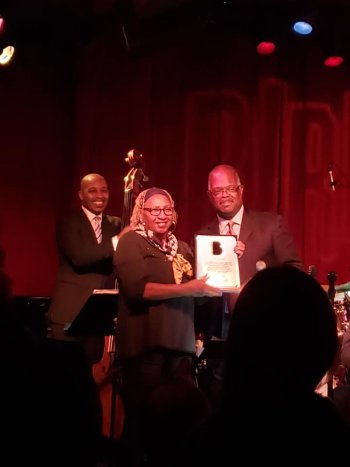
Dee Askew receiving her plaque from Scotty Barnhart
I was glad, too, that I got to see the band’s longtime manager/CEO, Dee Askew, presented with a plaque in appreciation of her 40 years working to keep the band going. That’s no small accomplishment. Many great bands have perished simply because they were not managed well.
Basie formed his big band in Kansas City, Missouri—a great city for jazz—in 1935. He had been playing piano in Bennie Moten’s band. When Moten died, Basie formed his band, which included the best of Moten’s players. Jazz enthusiast John Hammond chanced to hear the Basie Band, playing in a Kansas City club, via a short-wave radio broadcast. He was knocked out by what he heard. He found the band’s rhythmic pulse irresistible. He persuaded agent Willard Alexander to book the band on a national tour; he also helped them get recording contracts. And the band created a sensation.
They played a gutsy, earthy kind of big-band blues that was immediately recognizable as their own. Other bands tried to imitate what Basie was doing. They tried to play faster, louder, and push harder. But their flagwavers often felt forced. Nothing Basie did felt forced. His musicians could swing the blues fast and hard, but somehow sound utterly natural, and relaxed. They quickly established themselves as one of the major jazz orchestras.
When Basie died in 1984, it was touch-and-go for a while, as to whether the band could survive without him. (I remember one veteran jazz writer told me he did not think it would be possible. He remembered that in the late 1930s and 1940’s, Jimmie Lunceford’s Orchestra was considered to be a top-tier band like Basie’s—but when Lunceford died, the band was unable to survive for long without him. And some other “ghost bands” survived their leaders but in greatly weakened form, playing at a much lower level, and no longer recording—simply picking up “nostalgia” bookings every once in a while.) In 1987, Count Basie Enterprises, Inc. filed for protection from creditors under Chapter 11 of the bankruptcy laws. And some thought that would be the end of the band. But they came through that crisis, continuing to perform internationally, and to record. And maintain that great sound. They record regularly for Concord Jazz. And they remain a classic. I’m happy to see this.
* * *
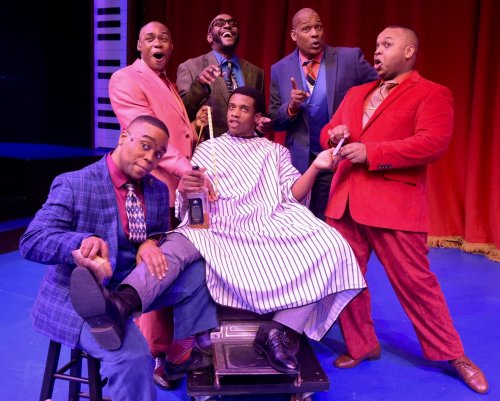
Cast of Westchester Broadway Theatre’s production of “Five Guys Named Moe”
I’m very glad that a friend and I were able to enjoy the high-spirited, fast-moving revue Five Guys Named Moe, which is currently playing at Westchester Broadway Theatre. A lot of talent on that stage. Director/choreographer Richard Stafford has found six performers – Tyler Johnson-Campion, Tony Perry, Napoleon M. Douglas, Quentin Avery Brown, Douglas Lyons, Isaiah Reynolds –who do justice to the hits of Louis Jordan. Each has his own personality. Each gets moments to shine individually. Tony Perry, as I noted in these pages a year ago, was one of my favorites in WBT’s 2018 production of Ain’t Misbehavin’. And it was good to see him again. The others in the cast are all new to me. But they all got well into the spirit of this music. And their zest was contagious.
Jordan, of course, was the jump-blues pioneer whose recordings bridged the gap between big bands and rock ‘n’ roll. An extroverted singer, sax player, and songwriter, Jordan got his start with Chick Webb’s famed, Harlem-based big band, then formed his own small group, Louis Jordan and his Tympany Five. (The actual number of musicians he used varied over the years. But his small groups—which cost much less than big bands to maintain—successfully played the biggest ballrooms and theaters in the country.)
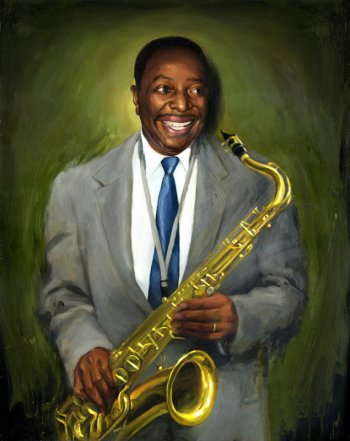
Louis Jordan
Jordan recorded many hits in the 1940’s and early ’50’s. He continued performing and recording until his death in 1975, but his years of greatest popularity were the 1940’s and early ’50’s. Others he influenced–such as Fats Domino, Chuck Berry, and Bo Diddley–surpassed him in popularity in the 1950’s.
I remember when Clarke Peters conceived this show, and was trying to interest producers in a revue of Louis Jordan’s hits. One seasoned, savvy showbiz pro told me–back in the late 1980s–that it “would never work. Nobody plays Louis Jordan’s records anymore. They’re old-fashioned, he’s forgotten.” But Peters was determined, and the show proved a surprise hit–first in London and then in New York, Jordan’s ebullient music won over a new generation. The productions were well-cast. Peters himself originated the role of “Four-Eyed Moe.” (And members of the British and American productions have recorded for me, I’m happy to note.)
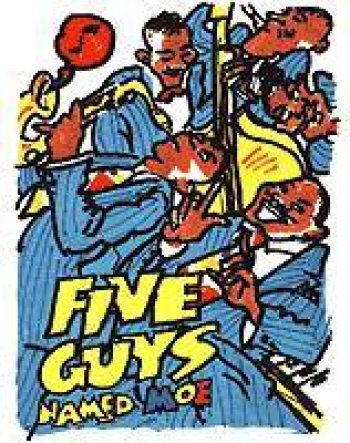
“Five Guys Named Moe” logo
The best of Jordan’s numbers–like “Let the Good Times Roll,” “Caldonia,” “Choo, Choo, Ch’boogie,” and “Is You Is or Is You Ain’t My Baby”–remain irresistible. If you’ve enjoyed shows like Ain’t Misbehavin’ and Smokey Joe’s Café, you’ll enjoy this one. It’s not quite as strong as those two shows. They’re constructed a bit better. (And the songs in Ain’t Misbehavin’ are more consistent in quality.) But it’s good fun. And the audience leaves smiling.
Incidentally, Louis Jordan pronounced his name as if it were spelled “Louie”–and on some records, his name was actually spelled that way. In the pre-show talk to the audience, on the night I attended, Westchester Broadway Theatre’s spokesman said the name as if it were “Louiss” (with a hard “s”). It should be pronounced as “Louie.”
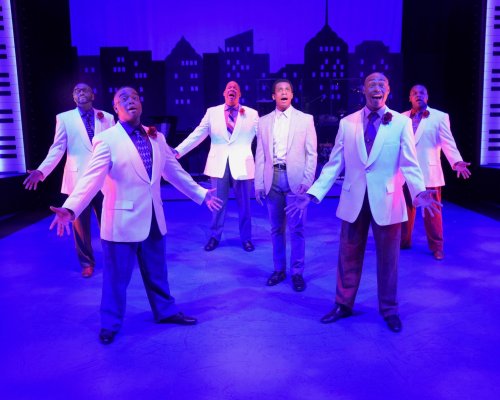
The cast of Westchester Broadway Theatre’s production of “Five Guys Named Moe”]
One minor complaint–and I’ve felt this way about every production of this show that I’ve seen–is that the band doesn’t fully capture Jordan’s spirit. The band sounds like any fine, clean, professional–but rather generic–show band. Jordan’s musicians swung the blues with a joyous elan of their own–a certain feeling that made their music infectious. The charts are being played cleanly and accurately. But at times I just wished there were a bit more “grease….”
This is the 216th production at Westchester Broadway Theatre and–my minor reservations noted–there’s much to enjoy here. And I look forward to seeing more of these performers. It’s nice seeing Louis Jordan remembered. “Let the good times roll,” indeed!
—CHIP DEFFAA, February 28, 2020.






Leave a comment